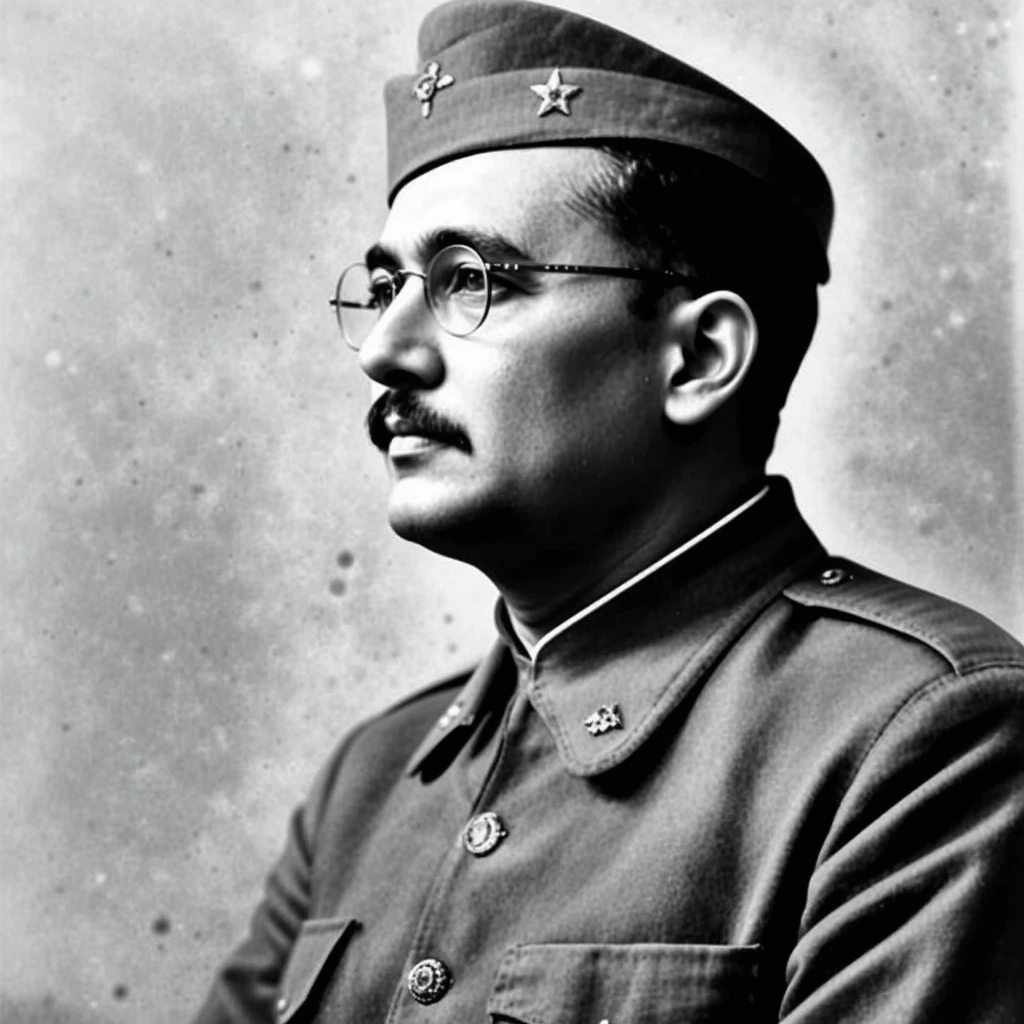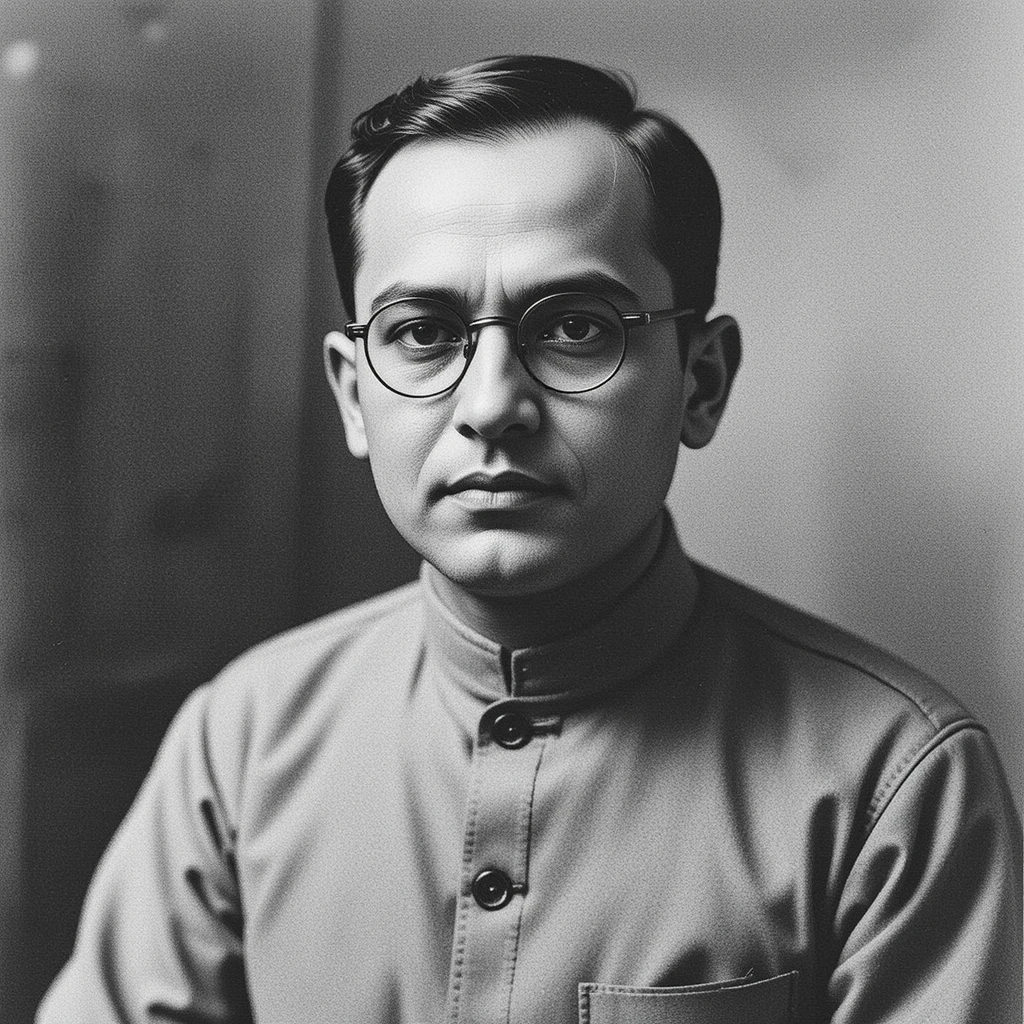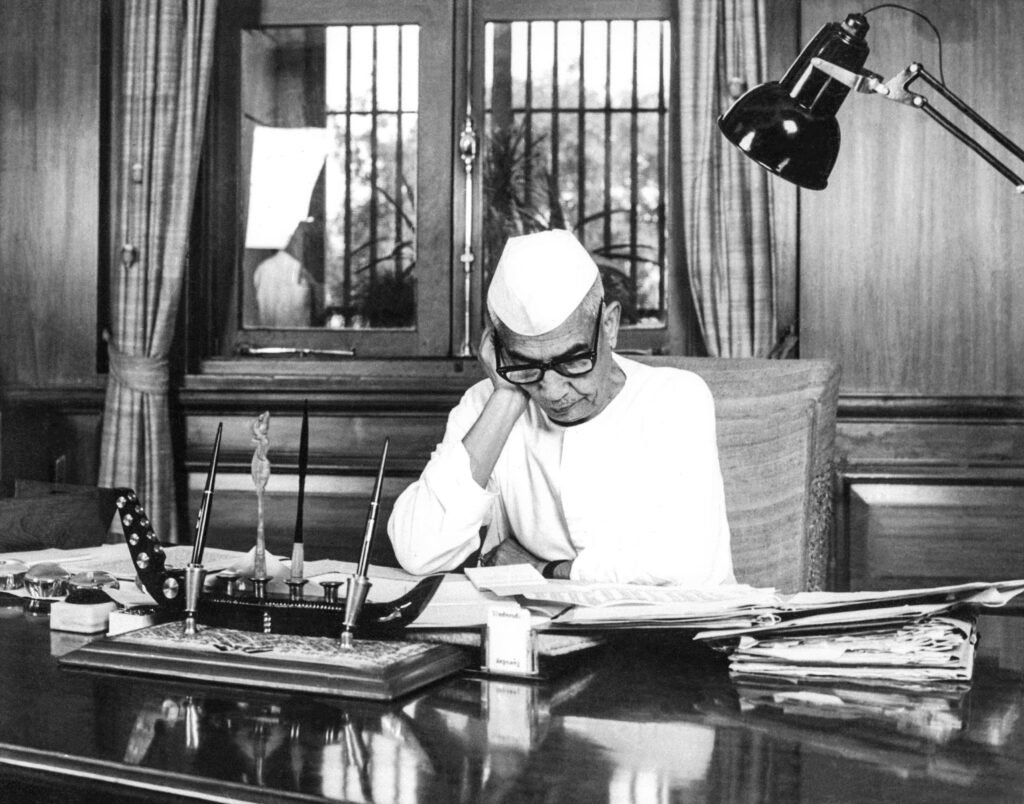Subhas Chandra Bose, often referred to as “Netaji,” is one of the most iconic and controversial figures in the history of India’s struggle for independence. His unwavering commitment to the country’s freedom, combined with his radical approach to achieving it, has earned him a legacy that continues to inspire and provoke debate. From his early life in Bengal to his final days, Bose’s contributions to India’s independence movement were groundbreaking, and his methods, though contentious, were integral to the fight against British colonial rule.

Table of Contents
Early Life and Education
Subhas Chandra Bose was born on January 23, 1897, in Cuttack, Orissa, to a well-to-do family. He was the ninth child of Janakinath Bose, a prominent lawyer, and Prabhavati Devi, a deeply religious woman. Raised in a family that valued education and discipline, Bose’s early life was marked by a strict upbringing and an affinity for academics. His childhood was spent in the culturally rich environment of Bengal, which had a long history of intellectual and political activism.
Education in India and Abroad
Bose attended Ravenshaw Collegiate School in Cuttack, where his academic brilliance began to shine. Later, he joined Presidency College in Kolkata, where he completed his early studies. At Presidency College, Bose’s exposure to political ideologies, especially nationalism, deepened. During this time, he also began to associate with several student organizations that were sympathetic to the cause of Indian independence.
Bose’s academic journey took him to England in 1919, where he enrolled at the University of Cambridge. He passed the prestigious Indian Civil Services (ICS) examination, but his decision to reject a career with the British colonial government was a turning point in his life. Bose felt that the ICS was a tool of oppression, and he ultimately chose the path of rebellion and resistance. This decision set the stage for his future involvement in the Indian National Congress and his commitment to the fight for independence.

Nationalist Movements in England
While in England, Bose became actively involved in the Indian nationalist movement, meeting prominent leaders and intellectuals who shared his passion for India’s freedom. This period exposed him to the intellectual undercurrents of the independence movement, and it was here that his ideological alignment with figures like Lala Lajpat Rai and Bipin Chandra Pal became more pronounced. His time in England would influence many of his later decisions, particularly his belief in militant nationalism as a legitimate tool for gaining independence.
Political Involvement and Ideology
Bose’s political career began when he joined the Indian National Congress (INC) in 1921. Under the leadership of Mahatma Gandhi, the INC had adopted a policy of non-violent resistance and civil disobedience. Initially, Bose was drawn to Gandhi’s methods and participated in the Congress’s campaigns for independence. However, as his political career progressed, it became clear that his ideology was at odds with Gandhi’s emphasis on non-violence.
Disagreement with Gandhi and the Congress Leadership
Bose’s disagreements with Mahatma Gandhi centered around his belief that India’s freedom could not be achieved through non-violent means alone. Bose was convinced that India needed to adopt a more aggressive approach, one that involved direct confrontation with the British colonial government. His radical ideas clashed with Gandhi’s strategy of non-violence, leading to a growing rift between them.
In 1939, Bose was elected the president of the Indian National Congress, but his tenure was short-lived. His more radical approach to achieving independence led to clashes with the more moderate faction of the Congress, led by Gandhi. Bose’s insistence on adopting revolutionary methods eventually led to his resignation from the Congress, and he was replaced by Gandhi’s ally, Jawaharlal Nehru.
Formation of the Forward Bloc
After his resignation from the INC, Bose formed his own political party, the Forward Bloc, which advocated for a more militant and revolutionary approach to Indian independence. The Forward Bloc sought to unite all factions of the Congress and other nationalist groups under a common banner to resist British rule. Bose’s advocacy for direct action, youth mobilization, and armed resistance set him apart from the mainstream Congress leadership.
Bose’s Vision of India’s Independence
Bose envisioned a free India that would be self-reliant, economically strong, and militarily capable. He rejected the idea that India could only gain independence through passive resistance. His belief in the importance of armed struggle was rooted in his admiration for the revolutionary movements of other countries, particularly in the context of global conflicts like World War I. In Bose’s view, the subjugation of India was not merely a result of British rule but a consequence of India’s failure to develop the necessary military and economic infrastructure to defend itself.
Formation of the Azad Hind Fauj (Indian National Army – INA)
One of the most defining moments in Bose’s life was his formation of the Azad Hind Fauj, or the Indian National Army (INA). The INA was formed in 1942 in Southeast Asia with the help of Japan, and it played a crucial role in Bose’s efforts to liberate India from British rule.
Bose’s Alliance with Axis Powers
Bose’s decision to ally with the Axis powers, particularly Nazi Germany and Imperial Japan, during World War II remains one of the most controversial aspects of his legacy. Bose believed that Japan, an Asian power, was a natural ally in the fight against British colonialism. In 1941, Bose made his way to Germany, where he sought support for India’s independence. From there, he traveled to Japan, where he gained the support of the Japanese military in forming the INA.
Role of the INA in the Freedom Struggle
The INA was composed largely of Indian prisoners of war who had been captured by the Japanese during their occupation of Southeast Asia. Bose’s leadership of the INA marked a significant departure from the traditional methods of the Indian independence movement. The INA fought alongside Japanese forces against the British in Burma and India’s northeastern frontier. Although the INA’s military campaign ultimately failed, its impact on India’s independence movement was immense.
INA’s Influence on Indian Nationalism
The INA’s bravery and sacrifices created a sense of nationalism that inspired millions of Indians, particularly the youth. The INA’s soldiers, known as “Azad Hind Faujis,” became symbols of resistance. Bose’s charismatic leadership and his commitment to armed struggle gave the Indian people a new sense of hope and unity in their fight for freedom. Even though the INA was not able to free India through military means, its contribution to India’s freedom struggle cannot be overstated.
Legacy and Controversies
Subhas Chandra Bose’s legacy is one of courage and unyielding commitment to his country, but it is also marred by controversies. His alliances with the Axis powers, particularly Nazi Germany and Imperial Japan, have led to debates about the moral implications of his actions.
The Mystery of His Death
One of the most enduring mysteries of Bose’s life is the story of his disappearance. Official reports claim that Bose died in a plane crash on August 18, 1945, in Taiwan. However, numerous theories have emerged suggesting that Bose survived the crash and lived in hiding for several years after the war. The lack of concrete evidence about his death has fueled rumors and speculation, and many believe that Bose may have faked his death to escape British surveillance.
Controversial Alliances during WWII
Bose’s decision to collaborate with Nazi Germany and Imperial Japan has been criticized by many, given the atrocities committed by the Axis powers during World War II. However, some argue that Bose’s collaboration with Japan was a pragmatic decision, given the dire circumstances of the time. Bose’s critics contend that his alliance with the Axis powers was morally indefensible, while his supporters argue that he was willing to sacrifice alliances to achieve India’s freedom by any means necessary.
Posthumous Recognition and Rehabilitation
In the years following his death, Subhas Chandra Bose’s contributions were largely sidelined by mainstream political leaders in India. However, as time passed, there was a renewed appreciation for his role in the struggle for independence. Several books, films, and documentaries have been created to honor his legacy, and various memorials and institutions have been dedicated to his memory. The Indian government posthumously awarded him the Bharat Ratna in 1992, decades after his death, acknowledging his role in India’s fight for independence.
Impact on India’s Independence
Subhas Chandra Bose’s impact on India’s independence cannot be overstated. Although he did not live to see India’s independence in 1947, his revolutionary methods and his formation of the INA inspired future generations of Indians to fight for their rights and freedoms.
Inspiration for Future Movements
Bose’s radical approach to independence and his emphasis on youth involvement laid the foundation for future nationalist movements. His call for unity, self-reliance, and armed resistance resonated deeply with young Indians, particularly in the wake of World War II. Bose’s influence can be seen in various post-independence movements, including the military and political spheres.
Role of the INA in Boosting Morale
Although the INA’s military operations were ultimately unsuccessful, its contributions to India’s independence struggle were significant. The INA’s courage and sacrifices galvanized public sentiment and were crucial in hastening the end of British rule. Many historians believe that the INA’s activities, along with the growing nationalist sentiment fueled by World War II, played a significant role in Britain’s decision to grant India independence.
Family and Personal Life
Bose was known for his deep commitment to his family and personal values, despite his public persona as a revolutionary leader. His close relationship with his brother Sarat Chandra Bose, a fellow freedom fighter, was significant in his personal life. His dedication to his family and his cause, however, often came at the expense of personal happiness, and his relationships with his family were sometimes strained by his relentless pursuit of India’s freedom.
Cultural and National Identity
Bose’s identity as an Indian nationalist was deeply connected to the cultural and political struggles of his time. He is widely celebrated in Indian culture, particularly through literature, films, and public memory. His speeches, writings, and actions continue to inspire millions of Indians, especially those who believe in his vision of a self-reliant and strong India. His iconic slogans, such as “Give me blood, and I will give you freedom,” resonate with those who admire his courage and patriotism.
The Connection Between Raja Mahendra Pratap Singh and Subhas Chandra Bose
Raja Mahendra Pratap Singh and Subhas Chandra Bose, though separated by time and differing contexts, shared a revolutionary vision for India’s independence. Both leaders were staunch nationalists who believed that freedom could not be achieved through passive resistance alone. They championed the idea of seeking international support and using unconventional methods to challenge British colonial rule.
Raja Mahendra Pratap Singh, a freedom fighter and diplomat, is well-known for establishing the Provisional Government of India in Kabul in 1915 during World War I. His government aimed to rally global powers against British rule and mobilize Indians to fight for independence. Subhas Chandra Bose, decades later, created the Provisional Government of Azad Hind in 1943, along with the Indian National Army (INA). Bose’s INA carried forward the vision of combining revolutionary leadership with international alliances, a strategy that Mahendra Pratap Singh had envisioned earlier.
Both leaders sought alliances with foreign powers to fight British rule—Mahendra Pratap Singh collaborated with Germany and the Ottoman Empire, while Bose aligned with the Axis Powers, including Japan and Germany, during World War II. Their shared approach of leveraging international diplomacy and armed struggle exemplified their bold and unyielding commitment to India’s freedom.
Although there is no evidence of direct interaction between the two, their ideologies and methods mirrored each other. Raja Mahendra Pratap Singh, who had paved the way for revolutionary governments in exile, admired the boldness and charisma of Bose’s leadership. Subhas Chandra Bose’s actions and INA were, in many ways, an extension of the revolutionary efforts that leaders like Mahendra Pratap Singh had initiated.
This connection highlights how the Indian independence movement was a cumulative effort built upon the contributions of many visionaries. Raja Mahendra Pratap Singh’s pioneering work laid a foundation for revolutionary methods that leaders like Subhas Chandra Bose would later take to new heights, making them kindred spirits in the struggle for India’s liberation.
Conclusion
Subhas Chandra Bose’s legacy as a freedom fighter remains one of the most significant in Indian history. His commitment to India’s independence, his formation of the INA, and his radical approach to resistance challenged the status quo and inspired generations of Indians to fight for their freedom. While his alliances during World War II remain controversial, his contribution to India’s independence struggle is undeniable. Whether through his leadership of the INA or his bold actions against the British, Bose’s story is a testament to the power of conviction, sacrifice, and the pursuit of freedom.
References:
1. Bose, S. C. (1997). The Indian National Army: The Forgotten Army. Har-Anand Publications.
2. Chatterjee, M. (2006). Subhas Chandra Bose: A Political Biography. D.K. Publishers.


